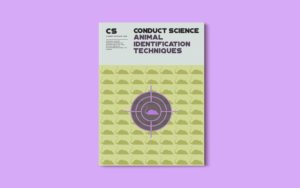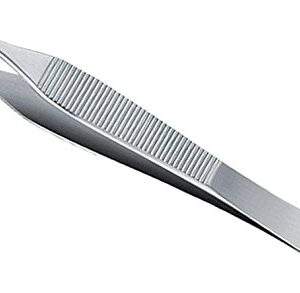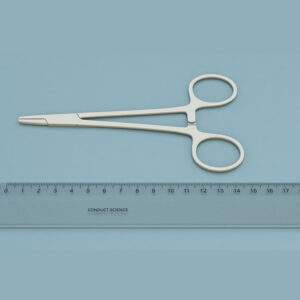As an Amazon Associate, ConductScience Inc. earns revenue from qualifying purchases
Introduction
Proteins are macromolecules that perform a vital role in every functional aspect of life processes, like transportation of molecules, signaling, movement of cells, regulation of gene expression, etc. Their purification, localization, and distribution have always been a critical part of most biological research.
There are 22 amino acids that contribute to the formation of different protein structures. It’s the tertiary structure of the protein (i.e. the three-dimensional shape) that determines its functional properties.
The histochemical reaction for protein demonstration is based on their structural properties (physicochemical, tissue location, and amino acid composition)[5]. The demonstrations relying on the amino acids can only be done if the amino acids to be demonstrated (like tryptophan, tyrosine, cysteine, etc.) are present in a very high concentration at the tissue location. But generally, they are present in a low concentration, mixed with many other different proteins, which complicates their demonstration. In this case, the demonstration of protein is done depending on their biological properties such as enzyme activity or specific antigenicity[5].
Before the demonstration process of protein, tissue fixation is done for its preservation and prevention of autolysis.
Fixation
Formaldehyde is used as a fixative for proteins, which form cross-links between different reactive groups. This reaction with formaldehyde is reversible and its cross-links can be hydrolyzed with prolonged washing with water[5][1].
Demonstration
The demonstration of protein is based on two principles[5]:
- Covalent bonding between the reactive amino group of the protein to be demonstrated and the stain which is used for the demonstration. This reaction gives the formation of a colored compound.
- The net charge on the protein to be demonstrated reacts with the ions of dye which is used for demonstration.
There are variant demonstration methods of proteins depending upon the type of amino acid to be demonstrated, whether they are basic (example: histidine, arginine, and lysine) or acidic (example: aspartate and glutamate)[1][9]. Some proteins are demonstrated by the use of methods that involve the demonstration of aromatic amino acids such as tryptophan, tyrosine, and phenylalanine.
Histochemical Technique/Methods for the demonstration of proteins.
Some techniques check the presence or absence of protein and some methods demonstrate any specific protein or amino acids in the test sample.
Tests for the presence of protein
1. Biuret test
The presence of protein in the test sample is often determined by the Biuret test. This test specifically checks the presence of the peptide bond. Two or more peptide bonds presence gives a positive test result.
Principle: Alkaline CuSO4 reacts with the protein present in the sample, forming a complex that gives a violet-colored product.
Material requirements: Test sample, Biuret Reagent, Serum albumin (for positive control), Pipettes, dry test-tubes, and water bath.
Procedure:
- In one test tube, take 1 ml of the test sample, in the second test tube, take 1 ml of distilled water (for a negative control), and in the third test tube, take serum albumin (for positive control).
- In all the three test tubes add 1 ml of Biuret reagent and shake the tubes well.
- Wait for 3-5 minutes, then you may see the color change in your test sample tube.
Observation: If the color changes from violet to blue; that shows the presence of protein with more than two peptide bonds. No change in the color shows the absence of protein. Sometimes the color of the tube may change to pink from blue, which shows the presence of very short peptides or peptones[5].
2. Ninhydrin test
This method is useful to detect amino acids, peptides, and proteins in the test sample. Ninhydrin reacts with a ɑ-amino group of amino acids and proteins.
Principle: Ninhydrin is a very strong oxidative agent. Reaction with a ɑ-amino group causes oxidative deamination of the amino acid, which gives a reduced form of ninhydrin, CO2, and ammonia. Then, the reduced ninhydrin reacts with liberated ammonia and other ninhydrin, which results in the formation of a blue-colored complex[10].
Requirement: Test sample, acetate buffer, phenol, Ninhydrin reagent (0.6 gm of ninhydrin dissolved in 10 ml of absolute ethanol), pipette, and test tube.
Procedure:
- Take 1 ml of the test sample in a test tube.
- Add 0.5 ml of buffer and 5.0 ml of phenol to the test sample tube. Shake the solution vigorously to get a clear solution.
- Then, add 0.5 ml of ninhydrin reagent in the test tube and mix it well.
- Keep the test tube in a water bath for 5 minutes.
- Then, cool the solution under tap water and shake the solution again, vigorously for about 30 seconds.
- The purple color solution shows a positive test result. The pale yellow color of the solution shows a negative test result.
Note: Due to the absence of a free ɑ-amino group in the proline, it will show a yellow color solution[10].
Tests for Amino acids and lower peptides
1. Xanthoproteic Reaction
This test is used to check the presence of protein having aromatic amino acids, in the test sample.
Principle: The Reaction of aromatic amino acids of the protein with the nitric acid on heating gives a yellow color because of the nitration of benzene ring. The colored product changes to orange when alkali is added to the solution.
Requirements: Test sample, Nitric Acid (concentrated HNO3), 40% NaOH
Procedure:
- Take 1 ml of the test sample in a dry test tube. ( You can take distilled water as negative and serum albumin as a positive control in two different test tubes).
- Now, add 1 ml of conc. HNo3 in the test tubes.
- Heat the test tubes over the flame.
- Cool the test tubes under the tap water (you may observe a yellow color change in your sample if it has an aromatic amino acid)
Note: Phenylalanine can give negative or very little change in yellow color though it has aromatic ring.
- Now add 〜2 ml of 40% NaOH in the test-tube.
(You may observe a change in the color of the sample from yellow to orange, which confirms the presence of aromatic amino acid in the unknown or protein-containing sample).
2. Sakaguchi test (Arginine reaction)
This method tests the presence of arginine in the test sample. Guanidyl group is found in histones, protamines, and lysozymes, in a very considerate amount.
Principle: The reagent used in this method is comprised of ɑ-naphthol and one drop of sodium hypochlorite (sometimes also called as Sakaguchi reagent). ɑ-naphthol reacts with the guanidyl group of arginine and the obtained product is oxidized by sodium hypochlorite. The oxidation results in the red color of the compound.
Requirement: Test sample, ɑ-naphthol, sodium hypochlorite, urea, pipettes, dry test tubes.
Procedure:
- Take 5 mg/5 ml of the test sample in a test tube.
- Add 1 ml of 10% NaOH and 1 ml of ɑ-naphthol to the test tube. Mix the solution well.
- After 5 minutes add 1 ml of sodium hypochlorite to the tube and mix it well.
- After 1 minute of adding sodium hypochlorite, add 2 ml of 20% urea solution.
- Thoroughly mix the solution by inverting the tube.
- You may observe a red-colored solution after 2-3 minutes, which shows the presence of arginine in your sample[3][2].
Note: You may get this test positive with any sample containing a guanidyl group.
3. Hopkin’s Cole test ( Tryptophan reaction)
This method tests the presence of tryptophan in the sample. Tryptophans are found in proenzymes, gonadotropins, and glucagon, in large concentrations.
Principle: This method is based on the reaction of tryptophan present in the sample with glyoxylic acid in the presence of conc. H2So4, that gives purple color to the solution.
Requirement: Test sample, Adam kevich’s reagent (glyoxylic acid– which is prepared by the reduction of oxalic acid with magnesium powder or sodium amalgam), conc. H2SO4, dry test tubes, pipettes.
Procedure:
- Take 2 ml of the test sample in the test tube.
- Add 1 ml of Adam kevich’s reagent to the test tube and mix it well.
- After adding the reagent, slowly alongside the wall of the test tube, add 1 ml of conc. H2SO4.
- In 2-3 minutes, a purple-colored ring can be seen at the interface of the two solutions, which indicates the presence of tryptophan in the test sample.
Tryptophan can also be demonstrated by dimethylaminobenzaldehyde (DMAB)[7], followed by coupling to diazonium salt. In this test, the blue color of the solution specifically shows the presence of tryptophan in the sample. |
4. Millon’s Test (Tyrosine reaction)
This method tests the presence of Tyrosine in the test sample.
Principle: The phenol group of tyrosine is nitrated by nitric acid. Then, this product forms a complex with mercury (I) and mercury (II) which gives pink to brick red color, to the solution.
Requirement: Test sample, Millon’s reagent ( mercury nitrate-nitric acid solution), test tubes.
Procedure:
- Take 1-2 ml of the test sample in the test tube.
- Add 1 ml of Millon’s reagent in the test sample tube and mix it well.
- If no color change observed, then heat the solution until it boils.
Note: At this stage, some proteins containing tyrosine appears white in color, which after heating turns red. Other proteins containing tyrosine can also immediately turn into red color.
- You may observe a red brick color solution which shows the test is positive. If no color change is observed, then your sample does not contain tyrosine.
5. Ellman’s test (sulfhydryl reaction)
This method is used the demonstration of the presence of a free sulfhydryl group (cysteine) in the unknown or protein sample[6].
Principle: Free sulfhydryl group reacts with DTNB (5,5’-dithio-bis-(2-nitrobenzoic acid), which gives the product of mixed disulfide and TNB (2-nitro-5-thiobenzoic acid). TNB produced in the reaction gives a yellow color to the solution.
Requirement: Test sample, Ellman’s reagent {DTNB+Tris buffer (1M, pH 8)+distilled water), pipette, and cuvette.
Procedure:
- Add 50 µl DTNB solution and 100 µl of tris buffer followed by 840 µl of distilled water in a cuvette (Ellman’s reagent). Mix the solution well by the use of a pipette.
- At last, add 10 µl of the test sample in the same cuvette making the final volume up to 1000 µl. Note: You can also directly use the commercially available Ellman’s reagent for this method.
- Mix the prepared solution well by the use of a pipette and incubate the mixture at room temperature for 5 minutes.
- Take the absorbance of the solution at 412 nm.
- Prepare different dilutions of the test sample and repeat the same procedure.
- For a standard calibration curve, cysteine acetate can be used and the same steps can be repeated[6].
Applications of Histochemical methods for protein demonstration in pathological conditions:
The application of protein demonstrating histochemical methods is extensively used in the biomedical field for the detection and study of pathological conditions, and in the field of research for histological assessments. Some of the applications of histochemical methods for protein, in different biological studies are explained below[4]:
1. Neurosecretory substance
Posterior pituitary hormones and carrier protein in them are rich in cysteine. Cysteine oxidative and in some reduction methods is widely used for the study of these hormones and carrier proteins.
2. Crooke-Russel cell
Cysteine demonstration methods can be used to study Crooke-Russel cells and pituitary basophils which contain granules that are rich in cysteine. This method can also be used to study the Addison’s diseases, for the observation of basophils and to study the ACTH.
3. Melanophore-stimulating hormone
This hormone increases the secretion of melanophores which makes the skin appear dark. This hormone is rich in tryptophan so the demonstration of tryptophan in this condition can be helpful to study the level of the hormone.
4. Serotonin (5-Hydroxytryptamine)
This hormone is a derivative of Tryptophan and to study the pathological condition related to argentaffin granules (granules rich in serotonin, which helps in digestion) and cancer (serotonin acts as a growth factor in many carcinomas and gliomas), tryptophan demonstrating method combined with carboline method can be used.
5. Neurokeratin
This substance was first isolated from the brain and found to be resistant to many proteases. Neurokeratin contains tryptophan in higher concentrations than any other amino acid and is rich in myelin sheath. So, any disorder related to myelin sheath can be studied by using tryptophan demonstrating histochemical methods.
6. Protein malnutrition
Low protein or high carbohydrates affect the body in many ways (example-kwashiorkor disease). This study can be done by using methods that demonstrate tryptophan (in muscle), and cysteine, tyrosine, and arginine (in the epidermis).
Conclusion
Histochemical methods for protein demonstration have always been an important part of biomedical research because of the involvement of proteins in every life process. There are multiple histochemical methods available having a huge contribution to the research study of various biological structures and pathological conditions like kwashiorkor disease, Addison’s disease, and cancer.
References
- A. G. Everson Pearse (1951). A Review of Modern Methods in Histochemistry. Journal of Clinical Pathology, 1794-1878. doi: 10.1136/jcp.4.1.1
- Anthony A. Albaneset and Jane E (1945). Frankston. The colorimetric determination of arginine in protein hydrolysates and human urine. Journal of Biological Chemistry, 159, 185-194. doi: http://www.jbc.org/content/159/1/185.
- C.J. Weber (1930). A modification of Sakaguchi’s reaction for the quantitative determination of arginine. Journal of Biological Chemistry, 86, 217-222. doi: http://www.jbc.org/content/86/1/217
- C.W.M. Adams (1958). The Application of Histochemical Methods for Protein Identification in the Study of Certain Pathological Problems. Journal of the Royal Society of Medicine 51(5), 339-343. PMCID: PMC1889642
- Hans Lyon (1991). Theory and Strategy in Histochemistry: A Guide to the Selection and Understanding of Techniques (1st ed.), Berlin, Springer.
- Jesse P. Greenstein (1938). Sulfhydryl groups in proteins: Egg albumin solution of urea, guanidine, and their derivatives. Journal of Biological Chemistry, 125, 501-513. doi: http://www.jbc.org/content/159/1/185.
- Jun Hara, Kazuvori Yamada and Yoshiaki Iwatsutsumi (1969). Some aspects of protein histochemistry in the parathyroid gland of the rabbit. Nagoya Journal of Medical Sciences, 32(1), 159-168. doi: doi/10.18999/nagjms.32.1.159.
- M.S. Burstone (1955). An evaluation of histochemical methods for protein groups. Journal of Histochemistry and Cytochemistry, 3, 32-49. doi: https://doi.org/10.1177/3.1.32.
- Yasuo Deghuchi (1961). Histochemistry of Protein Groups A Significance of Alloxan- and Ninhydrin-Schiff Methods for Protein. Proceedings of Japanese Histochemical Association, 2, 194-200. doi: https://doi.org/10.1267/ahc1960.1961.194.











